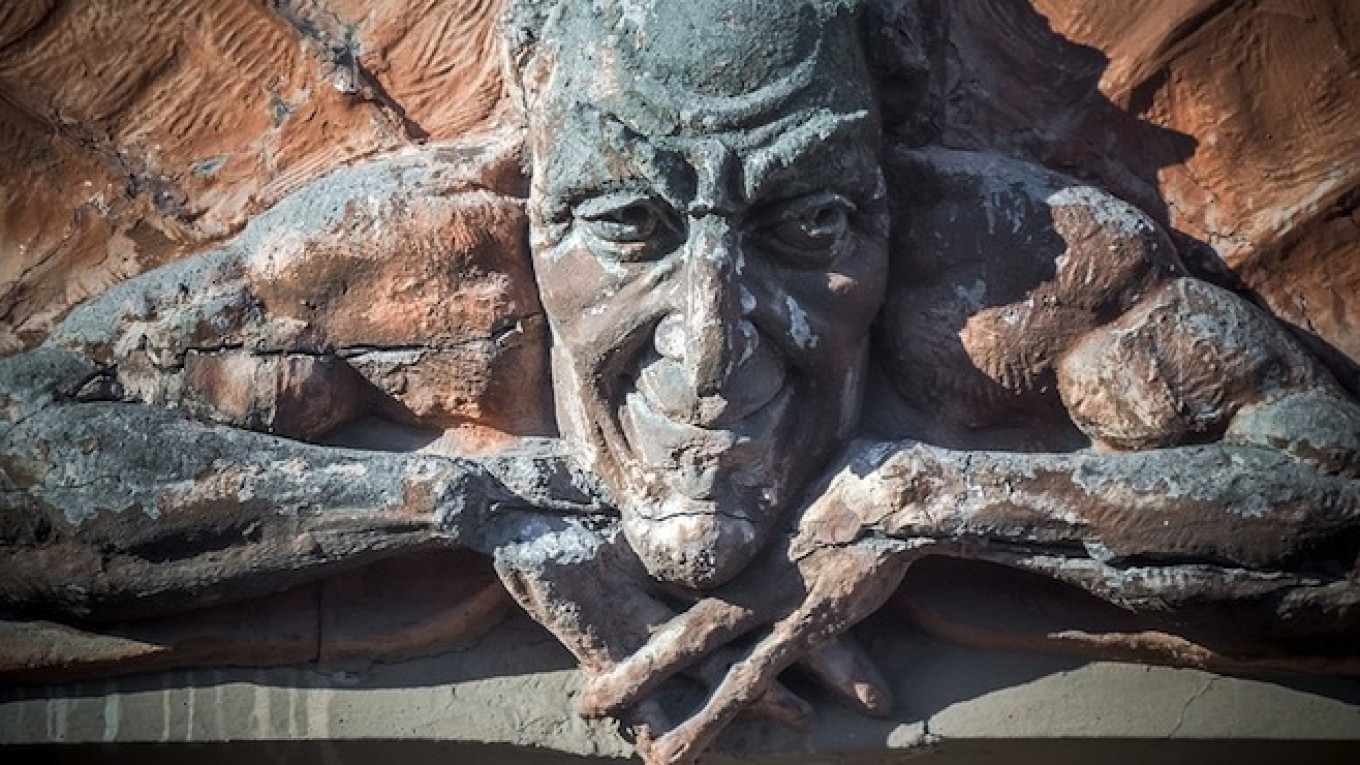A Cossack organization denied that one of its members was responsible for the removal of a 100-year-old bas relief depicting the mythical demon Mephistopheles from a historic building in St. Petersburg after a man claiming responsibility for the act said he was a member of the group.
In a letter sent to the editors of St. Petersburg news site Fontanka.ru, a man named Denis Gorchin — the self-described former leader of a group known as the Cossacks of St. Petersburg — said his organization was responsible for the removal of the bas relief from the building on Lakhtinskaya Street, which faces the construction site of a new Orthodox Church.
The relief depicted the mythical demon Mephistopheles, which appeared as the devil in Johann Wolfgang von Goethe's play "Faust." The building upon which it was mounted was designed by a famous St. Petersburg architect Alexander Lishnevsky in 1910, and is considered a minor landmark that was reportedly protected as a city heritage site.
St. Petersburg Cossacks were quick to distance themselves from Gorchin, who according to Fontanka.ru does not appear to be a real Cossack. St. Petersburg's Orthodox Cossack leader Andrei Polyakov said Gorchin had never been a member of the community or of the group Cossacks of St. Petersburg, the Kommersant newspaper reported Friday.
"I know all the community and the diaspora of the Cossacks. We have no Cossacks with such names and surnames; those are provocateurs," Polyakov was quoted as saying.
The bas relief was taken down on Wednesday, and local residents reported that the men responsible for taking down Mephistopheles repeatedly declined to identify themselves or their employer, prompting speculation among locals that the destruction was linked to the construction of the nearby Orthodox church, Russian news reports said.
Gorchin, the self-described former leader of the Cossacks, indicated he was motivated by religious reasons, though he insisted the Orthodox Church had no involvement in the attack, Lenta.ru news portal reported, citing a letter it had received from them man.
However, he added in the letter: "Opposite the church there is a figure of the devil, which prevents the [Orthodox] cross from being placed, and so on," St. Petersburg's Fontanka news agency reported.
"We were outraged by the fact that this horrible legend, this outlandish story, has effectively become an attraction, a draw for tourists, has become a [matter of] pride, and we have open worship of the Satan," the letter was quoted as saying.
St. Petersburg Orthodox leader Father Konstantin "would never have dared. So we dared," the letter said.
St. Petersburg police have identified the people responsible for the destruction of the bas relief, though it has declined to release specific names, the Russian News Service reported.
A Message from The Moscow Times:
Dear readers,
We are facing unprecedented challenges. Russia's Prosecutor General's Office has designated The Moscow Times as an "undesirable" organization, criminalizing our work and putting our staff at risk of prosecution. This follows our earlier unjust labeling as a "foreign agent."
These actions are direct attempts to silence independent journalism in Russia. The authorities claim our work "discredits the decisions of the Russian leadership." We see things differently: we strive to provide accurate, unbiased reporting on Russia.
We, the journalists of The Moscow Times, refuse to be silenced. But to continue our work, we need your help.
Your support, no matter how small, makes a world of difference. If you can, please support us monthly starting from just $2. It's quick to set up, and every contribution makes a significant impact.
By supporting The Moscow Times, you're defending open, independent journalism in the face of repression. Thank you for standing with us.
Remind me later.


